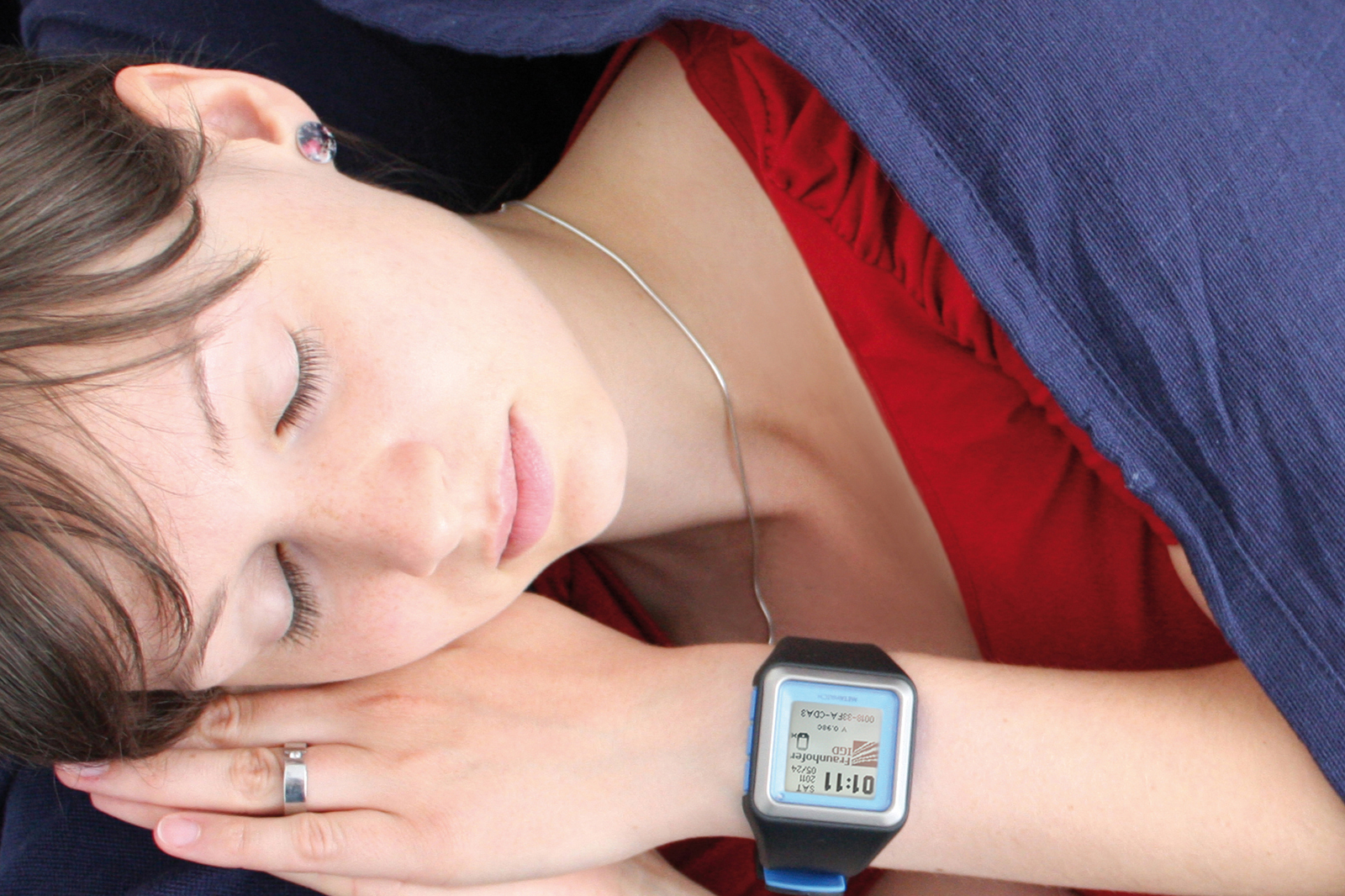Smart sleep analysis
Sleep disorders are a widespread problem. With the aid of smartwatches, researchers are analyzing sleep movement patterns and assisting doctors with diagnosis and therapy. Burnout and diabetes patients stand to benefit.

Tonight will be another sleepless night for countless people, who will toss and turn for hours. And when they finally drift off, they will wake up with a start a short while later. If their disorder becomes chronic, sufferers often take part in medical sleep studies in an attempt to uncover the reasons behind their sleeping problems. Currently, these studies employ specially developed, very expensive intelligent watches. Doctors read out the data recorded by the watches just once a week in the research lab, which slows down analysis.
Researchers at the Fraunhofer Institute for Computer Graphics Research IGD have now developed software for commercially available smartwatches, so that they too can be used in sleep research. “A smartwatch can do many of the things a smartphone can do: it tells the time and allows wearers to check their text messages and e-mails and find out what’s going on in social networks. But smartwatches can also do a whole lot more. These tiny computers fitted with acceleration sensors hold out many exciting possibilities in the field of sleep research,” says Gerald Bieber, a scientist at Fraunhofer IGD. The sleep recognition algorithm developed by Bieber and his team helps to detect anomalies in sleep as soon as they occur. Information such as bedtimes and duration and quality of sleep is derived from the watch’s sensor data and then analyzed. “Our algorithm detects movements and compares them against normal sleeping and waking patterns. The sensors register both micro-movements triggered by breathing or pulse and macro-movements such as twitches of the leg.” Patients can send the recorded data straight from their home to the lab via the smartwatch’s radio module.
Burnout from chronic sleep deficit
“For the doctor in charge of the patient’s care, a digital sleep diary like this is an important tool for diagnosing sleep disorders and for choosing the right therapy,” explains Bieber. “Sleep quality is an important indicator of burnout.” According to studies, it is chronic sleep deficit and not stress that is the real cause of burnout. There are many reasons for people having difficulty falling asleep, having interrupted sleep or having non-relaxing sleep: anything from the side effects of medication to too little movement during the day, or even just the wrong mattress.
In future, Bieber and his colleagues also want to detect unconsciousness in sleep. This is an issue that can affect diabetics and epileptics. Type 1 diabetes patients quite frequently fall into a state of hypoglycemia (low blood sugar) during the night, which can result in the patient entering a life-threatening diabetic coma. The software installed in the smartwatch would trigger an alarm in such situations and notify family members or the patient’s doctor. The smartwatch researchers are currently in talks with hospitals and soon hope to obtain test data from coma patients, in other words real sample data for comparison purposes.
At present, the smartwatch with the Fraunhofer software is being used in a pilot study. In collaboration with Vital & Physio health resort and mattress manufacturer Malie, the scientists are studying the sleep behavior of test subjects on back-friendly mattresses. The key issue they are investigating is whether the “right” mattress can help people with sleep disorders and enable them to sleep soundly through the night. The information the study will yield on activity patterns and sleeping behavior could be useful in fields such as combating stress and burnout. Fraunhofer IGD is responsible for technology development and modification within the study.
Saving electricity while you sleep
What is more, people suffering from sleep disorders will not be the only ones to benefit from the smartwatch app – it also offers homeowners and renters an opportunity to save on their electricity bills. “Eleven percent of energy consumption comes from devices in stand-by mode. Because our sensitive algorithm is capable of detecting whether, for example, the watch wearer has fallen asleep in front of the TV, the smartwatch could then switch off the TV automatically via a radio signal. Modern televisions already contain the necessary equipment, but older models can also be retrofitted with special network outlets,” says Bieber. In future, it will also be possible to switch off such diverse household objects as alarm systems, wireless internet routers, and lights using this technology.